remains one of the most difficult problems that dermatologists regularly face in their practice. In 2002, international standards for the treatment of hypertrophic (HR) and keloid scars (CR) were established, the latest updates of which were released in 2014. Topical silicone gel or silicone sheets, as well as intralesional corticosteroids, either alone or in combination, have been found to be essential in the treatment of these types of scars. Dermatologist Michael Gold talks about these and new effective and promising therapies.
Silicone gel – non-invasive method for the prevention and treatment of GH and CR
The first topical silicone gel was successfully used for the treatment of hypertrophic and keloid scars in 1993: with its help, it was possible to visibly smooth the surface of the affected areas, reduce the severity of scars and normalize skin color. In the course of subsequent studies, the effectiveness of this therapeutic method was also demonstrated, including for the prevention of the appearance of GH and CR after surgical excision of neoplasms on the skin.
Follow us onInstagram Recently, a new silicone gel formula has been introduced that allows the drug to be applied to closed surgical wounds during surgery or to open skin lesions after laser therapy or chemical peels. This film-forming silicone gel helps prevent or minimize the appearance of hypertrophic or keloid scars; the drug is applied during surgery or immediately after traumatic skin procedures (Fig. 1 and 2).
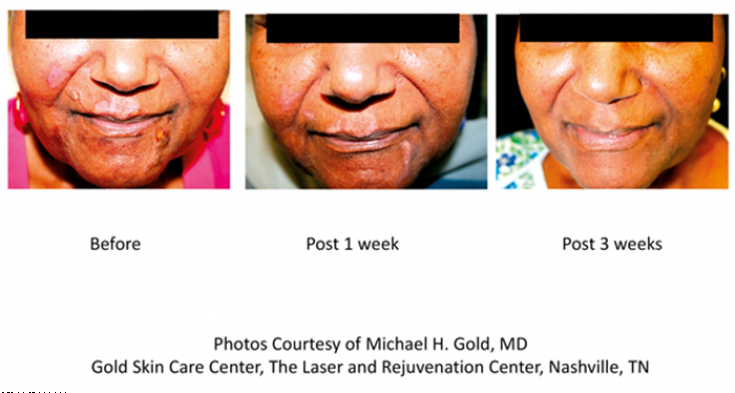
(Photo by Michael H. Gold, MD, Gold Skin Carer Center, The Laser and Rejuvenation Center, Nashville, TN)
Studies have also shown that silicone oil containing stabilized hypochlorous acid can reduce the appearance of hypertrophic and keloid scars and is one of the most interesting members of the "silicone family" available on the market.
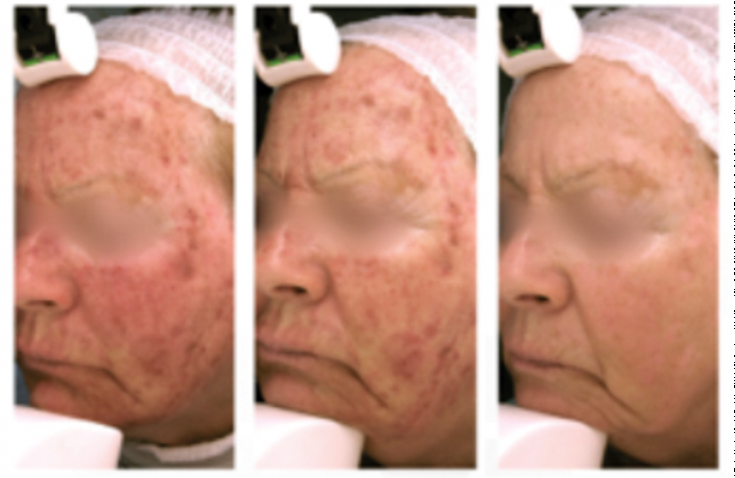
Left: immediately after the procedure, center: on the second day, on the right: on the third day
Results of treatment of hypertrophic and keloid scars with fractional CO2 lasers
Physicians are increasingly resorting to the treatment of hypertrophic and keloid scars with fractional CO2 lasers, as they ensure the destruction of scarring and promote the synthesis of new collagen.
The rule of thumb for laser therapy is that the sooner scar treatment is started, the better results can be achieved. More recent scars are more amenable to treatment with fractional CO2 lasers. Recent studies have also demonstrated their effectiveness, including in combination with pulsed dye lasers (Figures 3 and 4).
The rule of thumb for laser therapy is that the sooner scar treatment is started, the better results can be achieved.
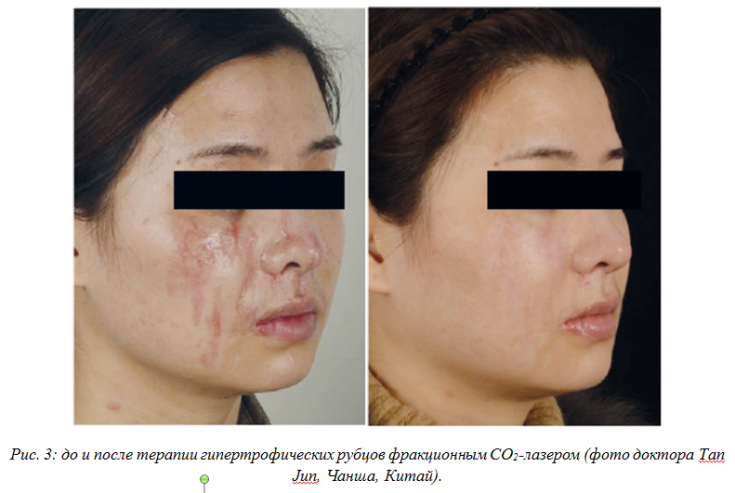
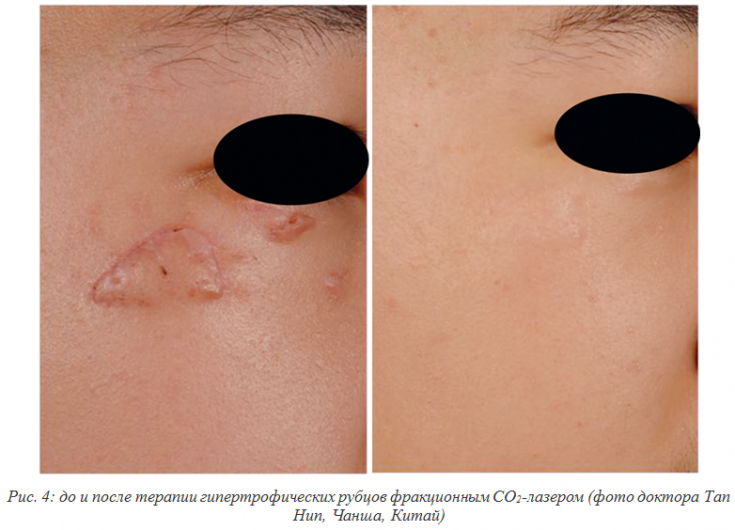 Surface radiation therapy in the treatment of GC and CR
Surface radiation therapy in the treatment of GC and CR
Surface Radiation Therapy (SRT) – a relatively new approach to dealing with keloid scars that are difficult to treat or have a high recurrence rate. Therapy is prescribed based on the size and location of keloid scars. PMT – an FDA-approved post-surgery procedure that reduces the recurrence rate of keloid scars by up to 10%.
When dealing with keloid scars to be treated with PBT, the doctor performs an excision of the scar or refers the patient to a plastic surgeon who can perform such an operation. PMT is carried out over the next three days.
Surgical Treatment of Scars: A Quick Guide for Surgeons There are various treatments that can reduce the severity of GH and CR, but the likelihood of recurrence is still an important aspect that patients must be informed about.
The radiation dose is calculated and delivered in three fractions – this limits the risk of adverse events or radiation dermatitis that can result from a single exposure to high doses of radiation. Clinical trials have demonstrated the effectiveness of this therapy, and the authors have used it in many patients (Fig. 5).
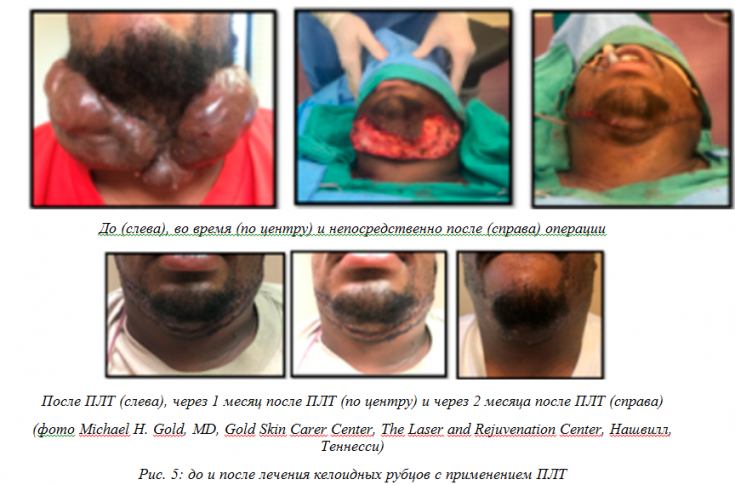 Increasingly, specialists are combining available therapeutic methods for the treatment of hypertrophic and keloid scars. Intra-scarring corticosteroids are often used to eliminate small scars. As a rule, topical silicone gel is prescribed simultaneously with corticosteroids – this approach is effective in most cases.
Increasingly, specialists are combining available therapeutic methods for the treatment of hypertrophic and keloid scars. Intra-scarring corticosteroids are often used to eliminate small scars. As a rule, topical silicone gel is prescribed simultaneously with corticosteroids – this approach is effective in most cases.
Scar correction: how to choose the right method Silicone gel, in order to prevent recurrence, is also used after surface radiation therapy.
Therapy for hypertrophic and keloid scars – not an easy task. There are various treatments that can reduce the severity of GH and CR, but the likelihood of recurrence is still an important aspect that patients must be informed about.







Add a comment